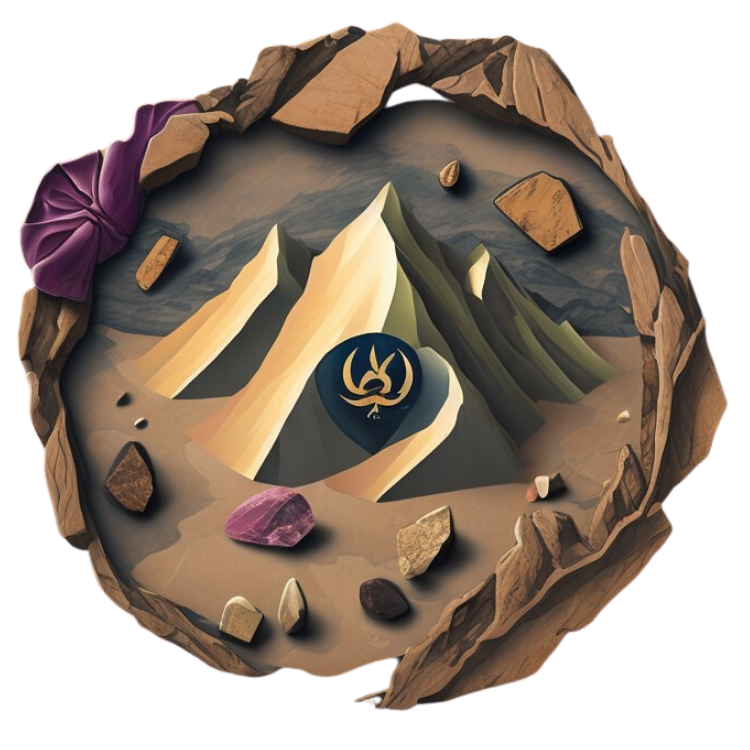10 Stunning Pink Gemstones You Can Discover, Collect, or Treasure: The Ultimate Rockhound's Guide

There's something magical about pink gemstones. Maybe it's the way they catch the light, glowing like the last brush of sunset. Or maybe it's how they feel delicate and bold at the same time. For rockhounds, gem lovers, and collectors alike, pink gems hold a special allure. And whether you dream of finding one in the wild, adding a rare beauty to your collection, or simply learning about nature's artistic side, this guide is your ultimate companion.
Here, we'll take a journey through 10 of the most beautiful pink gemstones on Earth. Along the way, we'll explore what gives them their color, where you can find them, how to identify them, and why each one deserves a spot in your rockhound's heart.
What Makes a Gemstone Pink?
Before we dive into the stones themselves, let's talk science for a second. Pink doesn't come out of nowhere. Most pink gemstones owe their color to trace elements inside their crystal structure. Manganese, iron, chromium, and even radiation can shift a gem's natural tone into stunning shades of pink.
The result? A spectrum that ranges from the softest blush to vivid hot pink, from rosy peach to deep fuchsia. Sometimes, the pink appears cloudy or milky, and other times, it's crystal-clear and gemmy. That wide range means there's a pink gemstone out there for every taste, purpose, and budget.
How to Identify Pink Gemstones in Nature
If you're hoping to find pink stones in the wild, it helps to know what to look for. Not all pink stones are obvious at first glance. Some might be dull until polished; others are translucent and glimmer in raw form.
Here are a few field tips:
- Start with location. Know which stones are found in which regions.
- Observe color, but also look for hardness, crystal form, and luster.
- Bring a good field guide, a loupe (small magnifier), and a rock pick.
- Many pink stones like rose quartz or rhodochrosite form in veins, pockets, or pegmatites. Keep an eye out near granite or metamorphic rock.
Remember, not all pretty pinks are gemstones. Some may be dyed or weathered minerals. Practice and patience help build a true rockhound's eye.
10 Beautiful Pink Gemstones Worth Knowing (and Hunting For)
Let's explore the stars of the show. These 10 pink gemstones vary in rarity, beauty, and where you might find them. Some are common and easy to collect; others are true treasures. All are worth admiring.
1. Rose Quartz
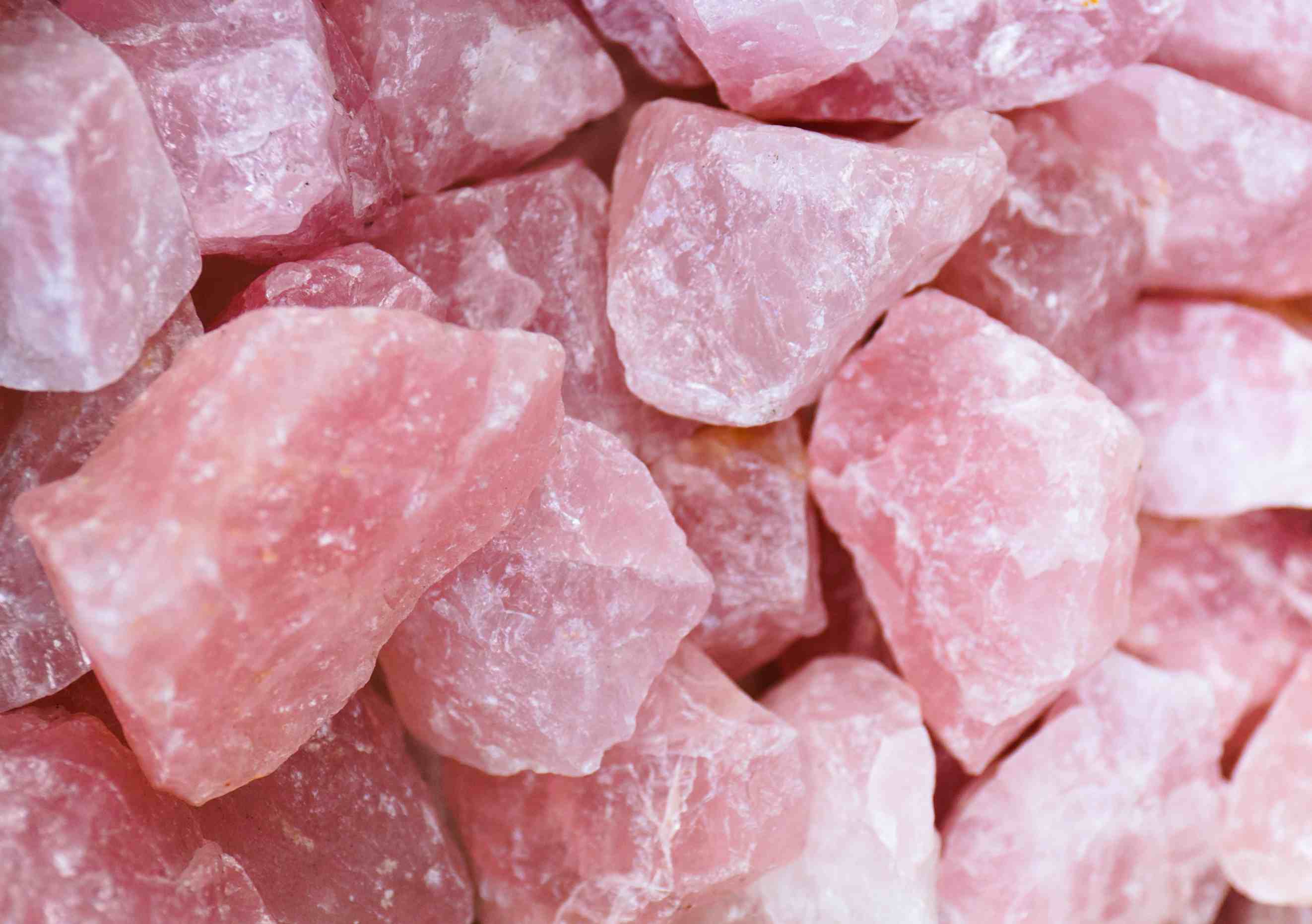
Rose quartz is one of the most popular pink gemstones in the world, known for its soft, rosy hue and calming energy. Unlike many transparent gems, rose quartz is typically cloudy or translucent, with a gentle glow that feels soothing to the eye. It's a variety of quartz and forms in large masses rather than distinct crystals.
Characteristics of Rose Quartz
- Color: Pale pink to deep rose
- Hardness: 7 on the Mohs scale
- Crystal System: Hexagonal
- Luster: Vitreous
- Transparency: Translucent to opaque
Uses of Rose Quartz
Rose quartz is commonly used for carved figurines, beaded jewelry, tumbled stones, and metaphysical tools. It's known as the "stone of love," often gifted to promote emotional healing.
Care Tips of Rose Quartz
It's relatively hard, but can still be scratched by tougher minerals. Clean with mild soap and lukewarm water. Avoid long exposure to direct sunlight, which can cause slight fading.
Location of Rose Quartz
Major deposits are found in Brazil, Madagascar, and India. In the United States, South Dakota's Black Hills are a famous source. Maine also hosts smaller deposits.
Please always bring appropriate attire and do research before venturing out to rock hunt and crystal hunt. Also, be sure to verify that the location you want to hunt at is available for public access. Rockhounding.org does our best to verify, but it is your responsibility to verify as well because sometimes things change. We are not liable for any actions you take from the information you find on this site.
Rockhounding Tips for Rose Quartz
Explore granite pegmatites, particularly in the Black Hills region. Rose quartz may be found as massive pink chunks or embedded in other rocks. Look for its soft, glassy sheen and uniform pink hue.
2. Rhodochrosite
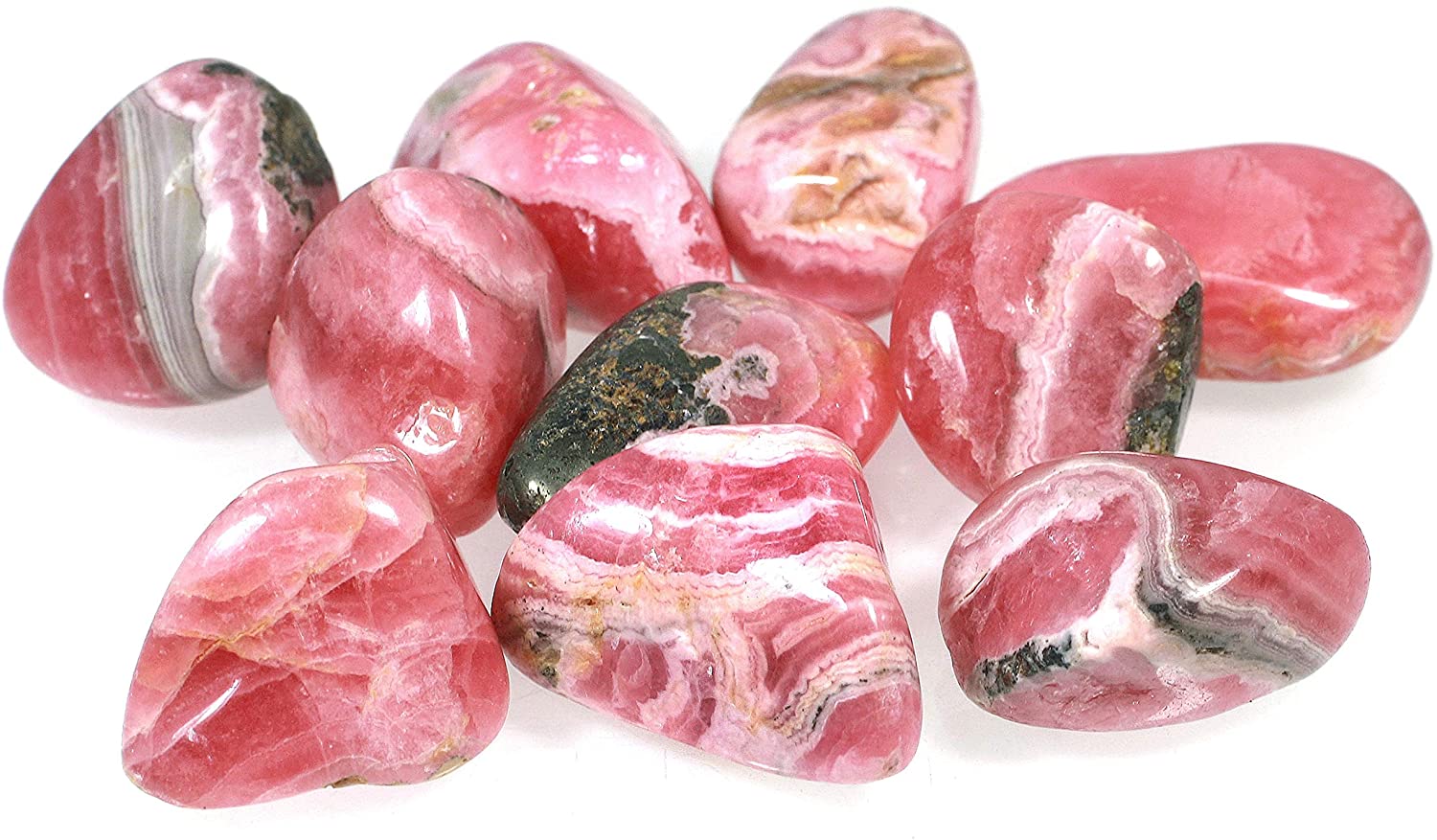
Rhodochrosite is an eye-catching gemstone with bold shades of pink and red, often layered with white or light pink bands. It forms in hydrothermal veins and manganese-rich deposits, often in stalactitic or botryoidal formations.
Characteristics of Rhodochrosite
- Color: Soft pink to vibrant cherry red
- Hardness: 3.5-4 on the Mohs scale
- Crystal System: Trigonal
- Luster: Vitreous to pearly
- Transparency: Transparent to opaque
Uses of Rhodochrosite
Due to its vibrant color and patterns, rhodochrosite is highly valued by collectors. It's cut into cabochons, beads, and display pieces, though its softness limits its use in rings or high-wear jewelry.
Care Tips of Rhodochrosite
Avoid water and abrasive cleaners. Rhodochrosite is delicate—clean only with a soft, dry cloth and store carefully to avoid scratching or crumbling.
Location of Rhodochrosite
The best-known deposits are in Argentina, where it forms in beautiful stalactitic patterns. In the U.S., Colorado's Sweet Home Mine produces gem-quality crystals.
Rockhounding Tips for Rhodochrosite
Search in former silver or manganese mines. Rhodochrosite is usually bright pink and may form in botryoidal shapes. If you spot grape-like or banded formations, you're likely on the right track.
3. Pink Sapphire
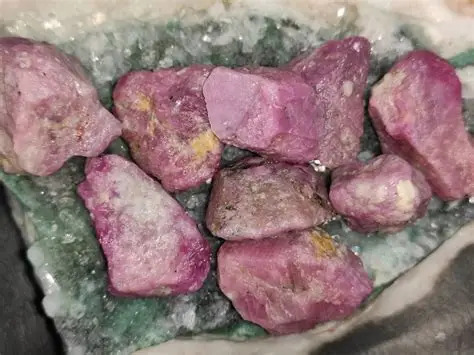
Pink sapphires are stunning, vibrant gemstones that can rival rubies in brilliance. They're a variety of corundum, with chromium giving them their pink tone. These gems are highly prized for their brilliance, durability, and rarity.
Characteristics of Pink Sapphire
- Color: Baby pink to vivid fuchsia
- Hardness: 9 on the Mohs scale
- Crystal System: Trigonal
- Luster: Vitreous
- Transparency: Transparent
Uses of Pink Sapphire
Ideal for engagement rings, earrings, and fine jewelry. Their exceptional hardness makes them perfect for daily wear. High-quality pink sapphires are also collector's gems and often certified by gemological labs.
Care Tips of Pink Sapphire
Pink sapphires are very durable. Clean with warm, soapy water or ultrasonic cleaners. Avoid harsh chemicals if the stone has been fracture-filled.
Location of Pink Sapphire
Most pink sapphires come from Sri Lanka, Madagascar, and Myanmar. In the U.S., a few have been found in Montana's sapphire deposits.
Please always bring appropriate attire and do research before venturing out to rock hunt and crystal hunt. Also, be sure to verify that the location you want to hunt at is available for public access. Rockhounding.org does our best to verify, but it is your responsibility to verify as well because sometimes things change. We are not liable for any actions you take from the information you find on this site.
Rockhounding Tips for Pink Sapphire
While rare in the U.S., you can try your luck in Montana's alluvial sapphire deposits. Look for small, rounded pebbles with a glassy luster. Screening gravels in rivers is often the best method.
4. Kunzite

Kunzite is a lovely pale pink to violet gemstone that glows with a soft, romantic light. It's a variety of spodumene and is known for its pleochroism—it shows different shades when viewed from different angles. Its large crystals make it popular for jewelry and collectors.
Characteristics of Kunzites
- Color: Light pink, lilac, or violet
- Hardness: 6.5-7 on the Mohs scale
- Crystal System: Monoclinic
- Luster: Vitreous
- Transparency: Transparent to translucent
Uses of Kunzites
Kunzite is faceted into gems for pendants and earrings. Due to its sensitivity to light, it's usually reserved for special occasions or collections rather than daily-wear rings.
Care Tips for Kunzites
Avoid prolonged sunlight exposure, which can fade its color. Clean with lukewarm water and a soft cloth. Never use ultrasonic cleaners.
Location of Kunzites
Mined in Afghanistan, Brazil, and Madagascar. In the U.S., California's Pala District is a famous source.
Rockhounding Tips for Kunzites
Explore lithium-rich pegmatites. Kunzite forms as large prismatic crystals with vertical striations. Pala and nearby areas sometimes offer fee-dig opportunities—call ahead and check regulations.
5. Pink Tourmaline (Rubellite)
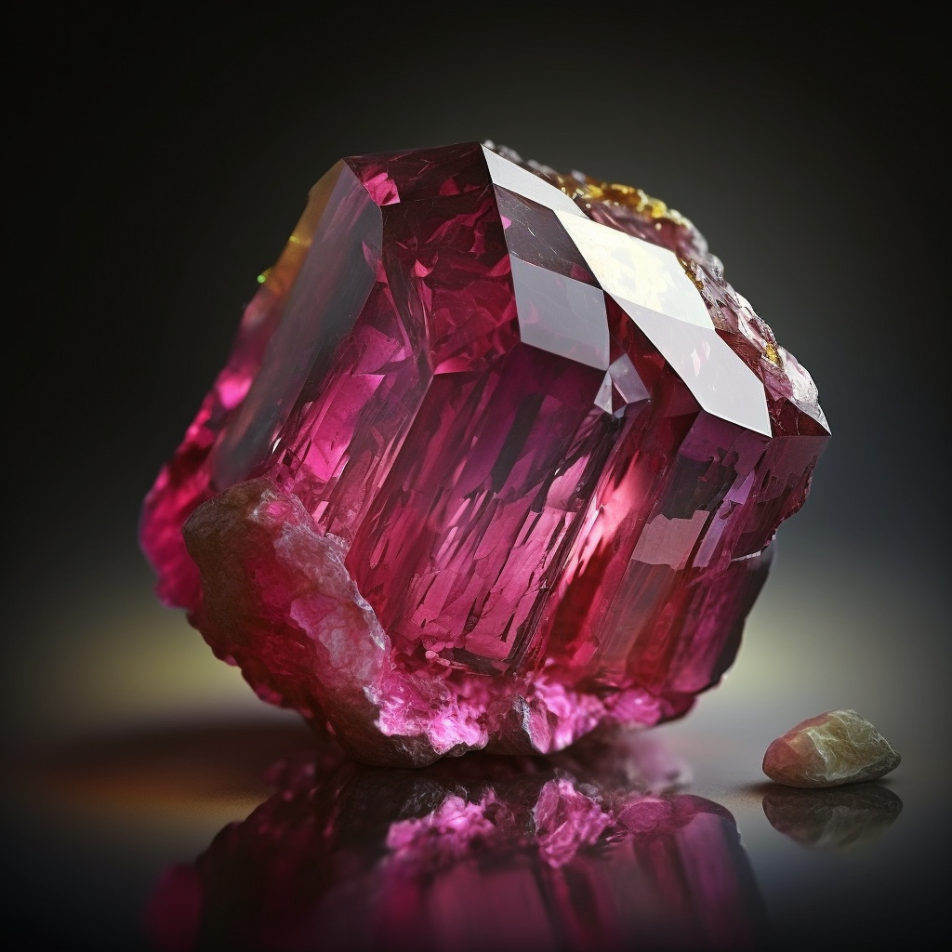
Pink tourmaline, particularly its vivid variety called rubellite, is one of the brightest and most colorful pink gemstones. It forms in long, slender crystals and can range from soft pastel to hot pink or deep raspberry.
Characteristics of Pink Tourmaline
- Color: Light pink to deep purplish-red
- Hardness: 7-7.5 on the Mohs scale
- Crystal System: Trigonal
- Luster: Vitreous
- Transparency: Transparent to opaque
Uses of Pink Tourmaline
Used in both fine jewelry and metaphysical practices. Its vibrant hues and good durability make it ideal for all types of adornment, especially when faceted.
Care Tips for Pink Tourmaline
Clean with warm soapy water and a soft brush. Avoid strong impacts and heat. Store away from harder gemstones.
Location of Pink Tourmaline
Major sources include Brazil, Nigeria, and Mozambique. In the U.S., California (San Diego County) and Maine (Mount Mica) are well-known for pink tourmaline.
Please always bring appropriate attire and do research before venturing out to rock hunt and crystal hunt. Also, be sure to verify that the location you want to hunt at is available for public access. Rockhounding.org does our best to verify, but it is your responsibility to verify as well because sometimes things change. We are not liable for any actions you take from the information you find on this site.
Rockhounding Tips for Pink Tourmaline
Search pegmatite zones for long, striated crystals. Tourmaline can appear black on the outside with bright pink interiors—break specimens cautiously. Several fee-dig mines in California and Maine allow public access with basic tools.
6. Morganite
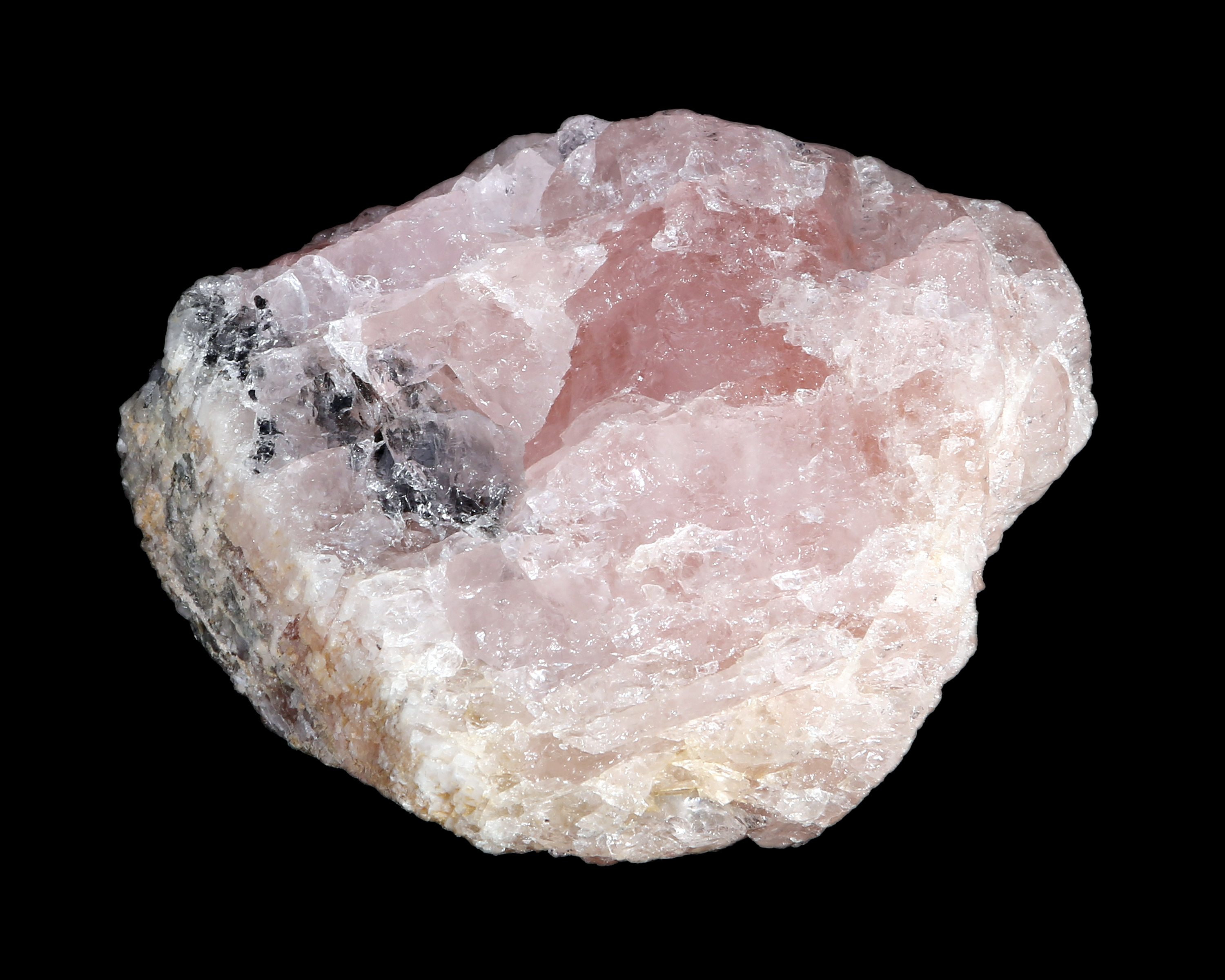
Morganite is a soft peach-pink to salmon-colored gemstone that exudes gentle warmth and elegance. It's a variety of beryl—the same mineral family as emerald and aquamarine. Named after financier J.P. Morgan, morganite is admired for its subtle brilliance and romantic glow.
Characteristics of Morganite
- Color: Light pink to peach
- Hardness: 7.5-8 on the Mohs scale
- Crystal System: Hexagonal
- Luster: Vitreous
- Transparency: Transparent to translucent
Uses of Morganite
Morganite is often faceted for rings, pendants, and fine jewelry. Thanks to its durability, it's a popular alternative to diamonds in engagement rings.
Care Tips for Morganite
Clean with warm water, a soft brush, and mild soap. Avoid exposing it to harsh chemicals. Though fairly hard, store separately to avoid scratches from harder gems like sapphire or diamond.
Location of Morganite
Significant deposits are found in Brazil, Madagascar, and Afghanistan. In the U.S., morganite has been mined in California and Maine.
Rockhounding Tips for Morganite
Look in lithium-rich pegmatites alongside tourmaline and kunzite. In Southern California, mines in San Diego County have produced morganite crystals. Seek clear, salmon-hued prismatic crystals in granite pegmatites.
7. Pink Diamond
Pink diamonds are some of the rarest and most breathtaking gemstones on Earth. Their pink hue is thought to result from structural distortions during formation, rather than from trace elements. They are highly valued for their brilliance, rarity, and prestige.
Characteristics of Pink Diamond
- Color: Light blush to intense purplish-pink
- Hardness: 10 on the Mohs scale
- Crystal System: Cubic
- Luster: Adamantine
- Transparency: Transparent
Uses of Pink Diamond
Primarily used in high-end fine jewelry and investment pieces. They're also auctioned as collector gems at record-breaking prices due to their scarcity.
Care Tips for Pink Diamond
As the hardest gemstone, pink diamonds are easy to maintain. Clean with soapy water and a soft brush. They are safe for ultrasonic and steam cleaners.
Location of Pink Diamond
The Argyle Mine in Australia produced most of the world's pink diamonds until it closed in 2020. Rare pink diamonds also occur in Russia, South Africa, and Brazil.
Rockhounding Tips for Pink Diamond
Unfortunately, natural pink diamonds are nearly impossible to find casually. They occur in kimberlite pipes and require industrial-scale mining. Still, gravel screening at diamond digs (like Crater of Diamonds in Arkansas) can yield surprises—though pink finds are exceedingly rare.
8. Pink Spinel
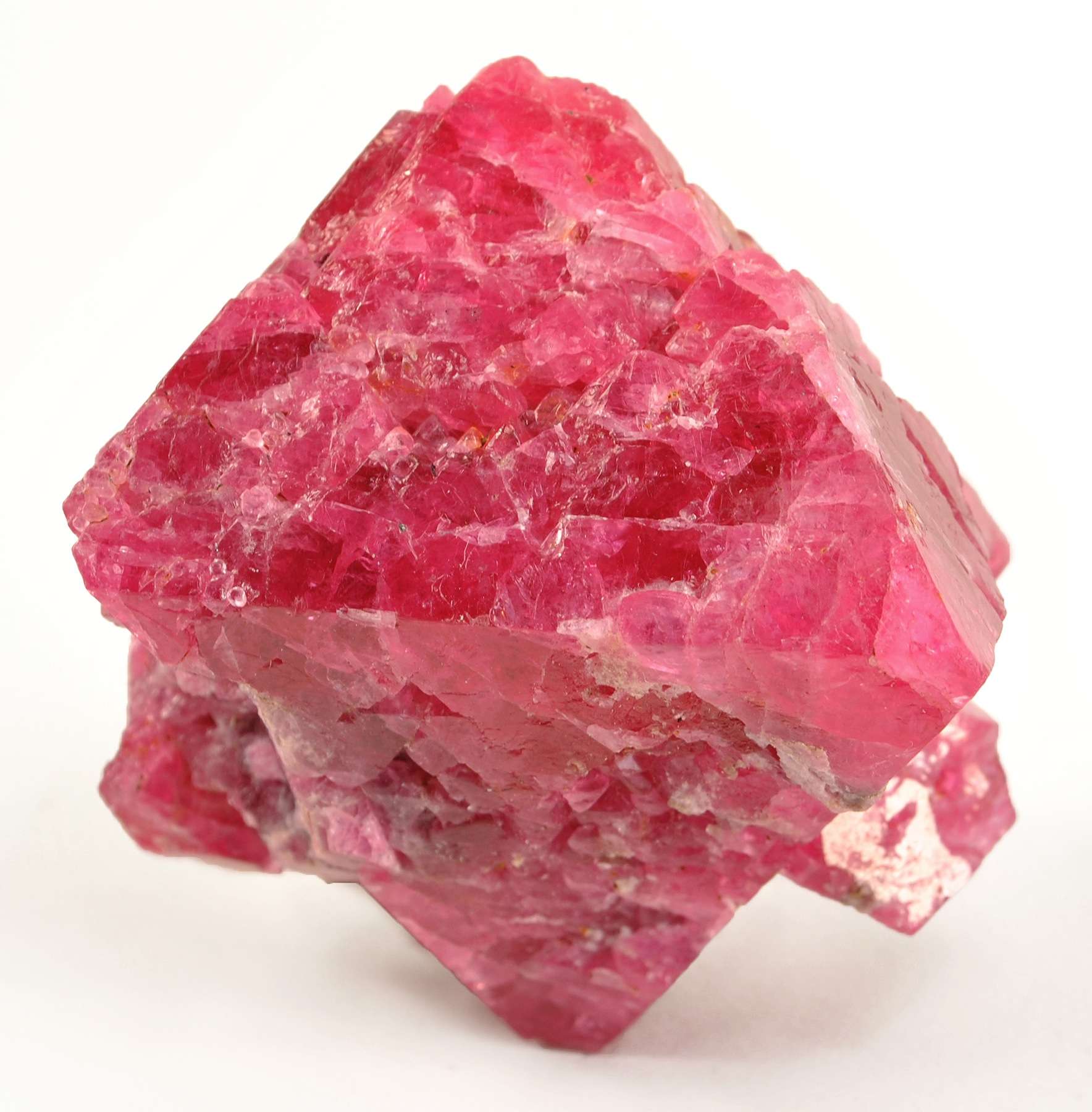
Pink spinel is a vibrant, brilliant gemstone often mistaken for ruby throughout history. It forms in metamorphic rocks and is prized for its dazzling clarity and vivid saturation. Unlike many pink gems, spinel is untreated and entirely natural.
Characteristics of Pink Spinel
- Color: Soft pink to hot pink, purplish-pink
- Hardness: 7.5-8 on the Mohs scale
- Crystal System: Cubic
- Luster: Vitreous
- Transparency: Transparent
Uses of Pink Spinel
Used in high-end and everyday jewelry. Spinel is enjoying a resurgence in popularity thanks to its brilliance, hardness, and rarity.
Care Tips for Pink Spinel
Clean with mild soap and water. It's safe for ultrasonic cleaning. Store with care to avoid scuffs from harder stones.
Location for Mining Pink Spinel
Main sources include Myanmar (Burma), Sri Lanka, Vietnam, and Tanzania. Some spinel is also found in Afghanistan.
Rockhounding Tips for Pink Spinel
Pink spinel is often found in marble-hosted deposits, especially in Asia. While not easily found in the U.S., you may spot synthetic versions in jewelry. In the field, spinel is tough and shiny—look for transparent, gemmy pink crystals in marble.
9. Pink Topaz
Natural pink topaz is extremely rare and highly sought after. Most pink topaz in the market is actually colorless topaz that has been heat-treated. When found naturally, it shows a soft-to-vivid pink hue with stunning transparency and brilliance.
Characteristics of Pink Topaz
- Color: Pale pink to vivid purplish-pink
- Hardness: 8 on the Mohs scale
- Crystal System: Orthorhombic
- Luster: Vitreous
- Transparency: Transparent
Uses of Pink Topaz
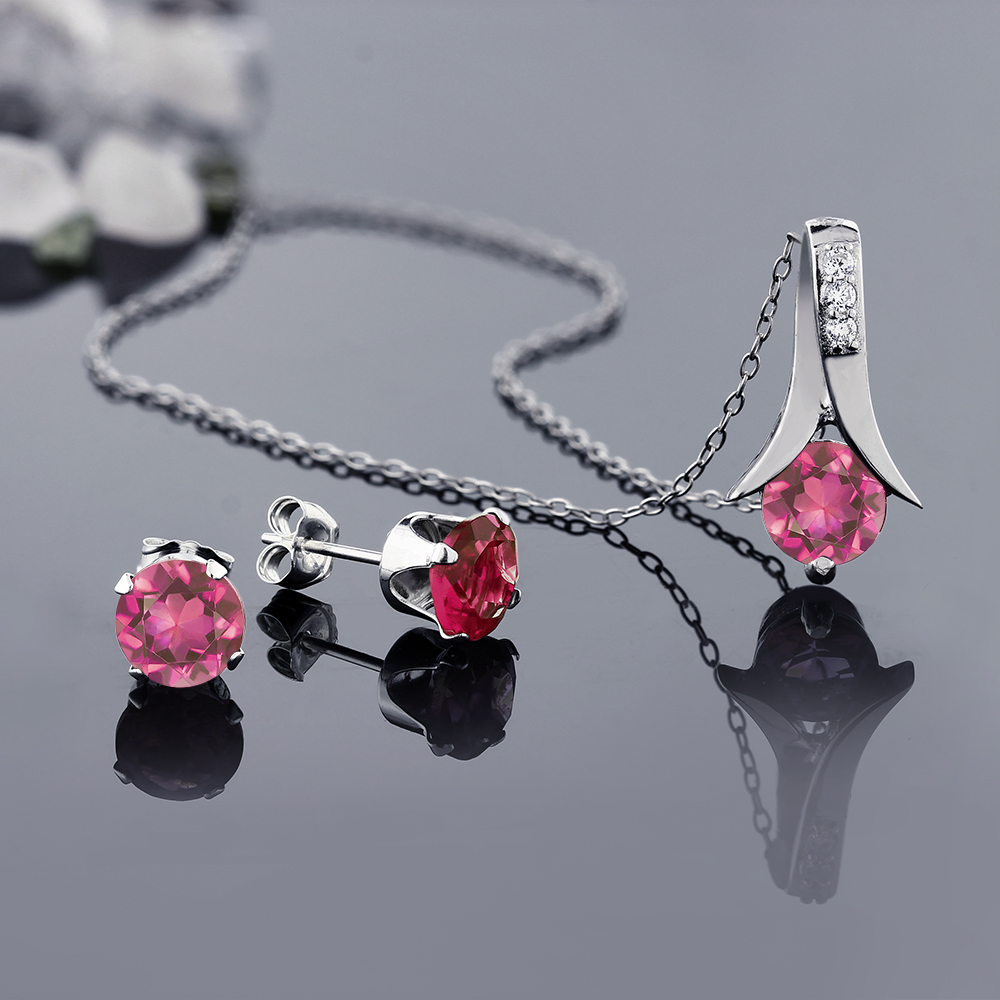
Used in rings, earrings, and pendants. Its excellent hardness and clarity make it a popular alternative to pricier pink sapphires or tourmalines.
Care Tips for Pink Topaz
Clean gently with soap and lukewarm water. Avoid extreme heat, sudden temperature changes, or strong chemicals, which can damage treated stones.
Location for Mining Pink Topaz
Most pink topaz comes from Brazil, Pakistan, and Russia. Natural pink specimens are particularly rare. Some treated stones also come from the U.S. and Sri Lanka.
Rockhounding Tips for Pink Topaz
While natural pink topaz is rare in the U.S., look for topaz in rhyolite flows and pegmatites in Utah (Topaz Mountain) and Texas. Most will be colorless or yellowish, but heat-treatable stones may show slight pinkish undertones.
10. Pink Opal
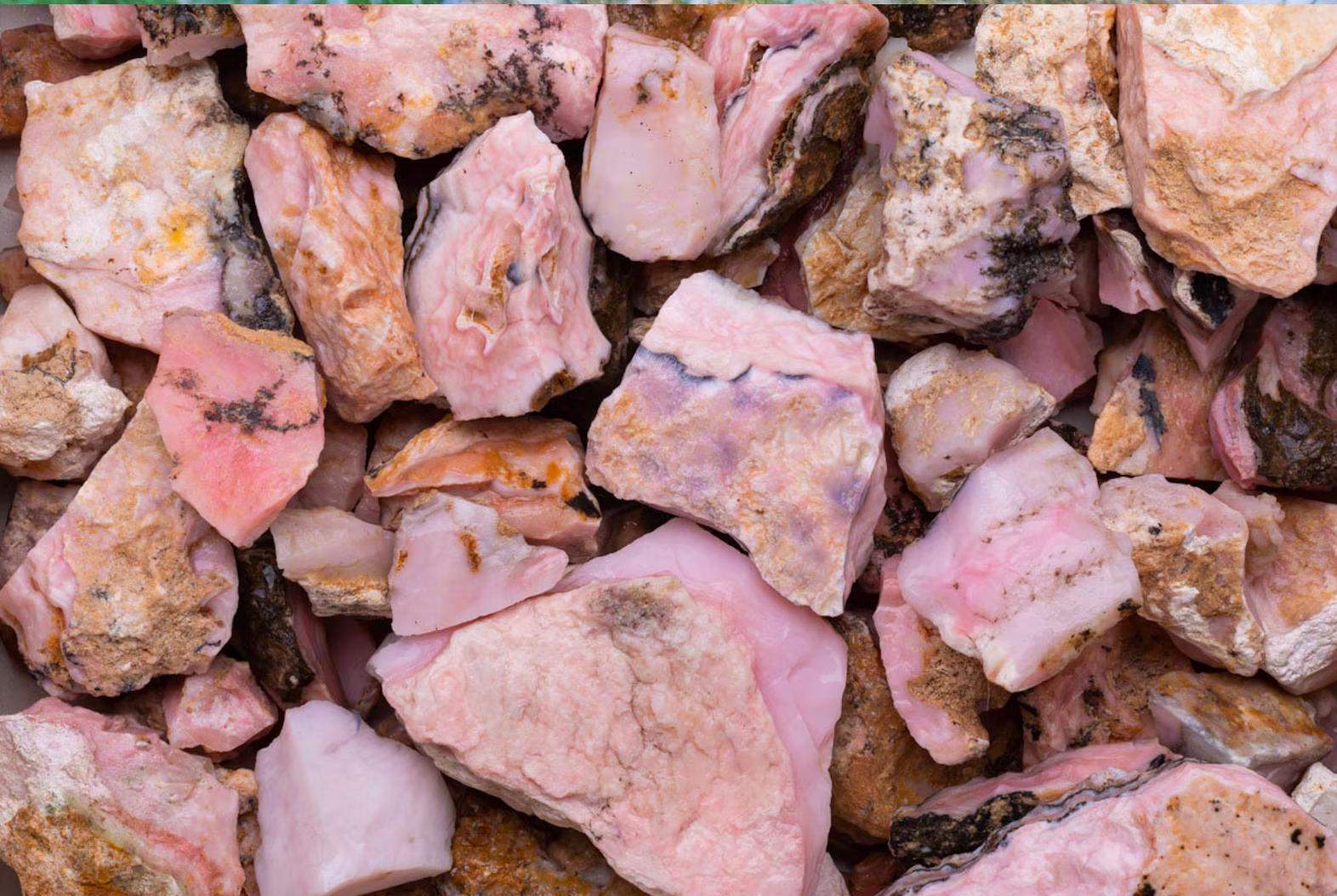
Pink opal is an opaque, pastel gem that feels soft and serene. Unlike other opals, it lacks the flashy play-of-color and instead glows with a solid, creamy pink tone. It's considered a "common opal" but is far from ordinary in appearance.
Characteristics of Pink Opal
- Color: Soft baby pink to pale rose
- Hardness: 5-6 on the Mohs scale
- Crystal System: Amorphous (non-crystalline)
- Luster: Waxy to dull
- Transparency: Opaque to translucent
Uses of Pink Opal
Pink opal is shaped into cabochons, beads, and carvings. It's often used in gentle, feminine jewelry and metaphysical healing.
Care Tips for Pink Opal
Opals are porous and can crack if exposed to heat or drying environments. Avoid soaps, detergents, or sudden temperature changes. Store with a little moisture to prevent dehydration.
Location for Pink Opals
Most pink opals come from Peru, especially the Andean Highlands. Other sources include Mexico and Western Australia.
Rockhounding Tips for Pink Opal
Pink opal isn't commonly found in the U.S., but explore rhyolitic or volcanic rock zones for common opal. If you travel abroad, Peru offers mining tours and markets where you can ethically source beautiful raw specimens.
Which Pink Gemstones Are the Rarest or Most Valuable?
If you're chasing rarity and investment-worthy gems, pink diamonds top the list. They can cost hundreds of thousands per carat. Next comes fine pink sapphires and rubellite tourmalines. Rarity is driven by location, clarity, color saturation, and demand.
And pink spinel—long overlooked—has risen in value thanks to its brilliance and durability.
Where Can You Find Pink Gemstones in the U.S.?
Rockhounds rejoice: the U.S. is home to some incredible pink gemstone localities.
- California: Famous for pink tourmaline and kunzite
- Maine: Known for tourmaline, including soft pinks
- Colorado: Home to rhodochrosite, pink fluorite
- South Dakota: Rose quartz is found in abundance
- North Carolina: Thulite and rose quartz sightings
Many fee-dig mines allow public access. Always check local regulations and ask permission before collecting.
The Symbolism and Healing of Pink Gemstones
Throughout history, pink stones have symbolized love, compassion, and peace. Crystal healers often use them to support the heart, calm the mind, or attract positive relationships.
While science hasn't verified these effects, many people find personal meaning in carrying or wearing pink gems. Rose quartz, in particular, is beloved in wellness circles.
Caring for Your Pink Gemstones
Not all pink gems are tough. Some, like kunzite or pink halite, can fade or dissolve in water. Others, like sapphire and garnet, are highly durable. Clean gently with mild soap and a soft brush. Avoid harsh chemicals or ultrasonic cleaners unless the stone is known to be stable.
Final Thoughts: Which Pink Gemstone Should You Choose?
That depends on what draws you in. Some people fall in love with the soft glow of rose quartz, others seek the fire of a pink sapphire. Whether you collect for beauty, metaphysical value, or the thrill of the hunt, pink gemstones offer a window into nature's elegance.
Next time you walk a rocky trail or visit a gem shop, keep your eyes open. That perfect pink gem might be closer than you think—waiting to be discovered, admired, and treasured.
FAQ: Pink Gemstones
1. What is the most common pink gemstone?
+Rose quartz is the most common and widely available pink gemstone, found in many locations worldwide and relatively affordable.
2. Which pink gemstone is the most valuable?
+Pink diamonds are the most valuable, followed by high-quality pink sapphires and rubellite tourmalines. Rarity and color intensity determine value.
3. Can you find pink gemstones in the United States?
+Yes! California and Maine are famous for pink tourmaline and kunzite, South Dakota for rose quartz, and Colorado for rhodochrosite. Many locations offer fee-dig opportunities.
4. What causes pink color in gemstones?
+Pink color typically comes from trace elements like manganese, chromium, or iron in the crystal structure, or from structural distortions during formation.
5. Are pink gemstones good for engagement rings?
+Pink sapphires, morganite, and pink diamonds make excellent engagement ring stones due to their hardness and durability. Softer stones like kunzite or rhodochrosite are better for occasional wear.
